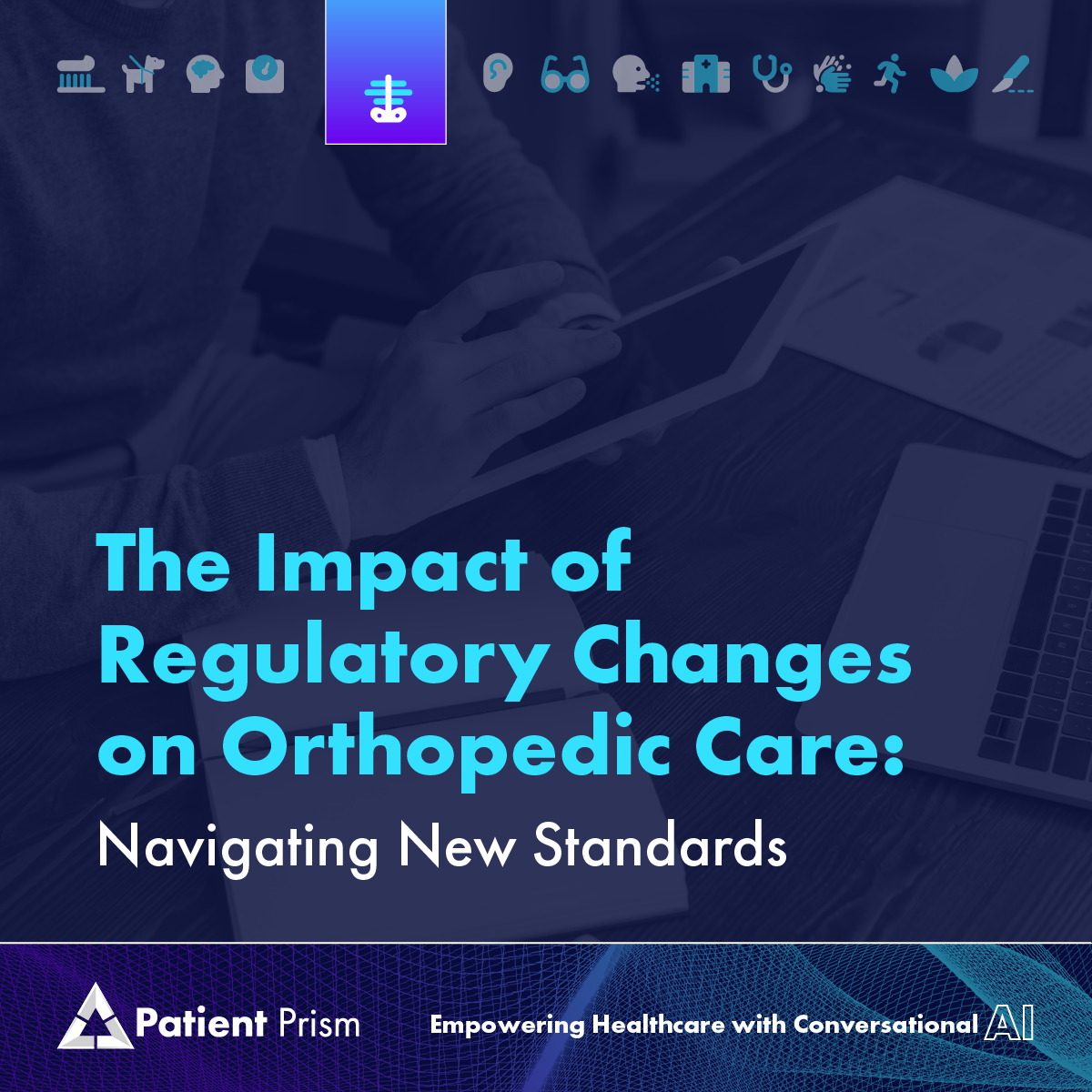Regulatory Changes in Orthopedic Care. Regulatory changes in the healthcare sector are nothing short of revolutionary, especially within the realm of orthopedic care. These modifications not only prioritize patient safety but also bring forth a series of operational and financial challenges that practices must navigate. In this blog, we will delve into how these regulations affect orthopedic practices, from stringent safety measures to the burgeoning role of telehealth. Moreover, we’ll examine how conversational AI can support practices in maintaining compliance and enhancing patient engagement amidst these changes.
The Impact of Regulatory Changes in Orthopedic Care: Navigating New Standards
In the ever-evolving landscape of healthcare, orthopedic practices face a continuous stream of regulatory changes. These regulations, while primarily designed to enhance patient safety and care quality, also bring about substantial operational and financial challenges. This comprehensive exploration delves into the various aspects of these regulatory impacts and showcases how emerging technologies, particularly conversational AI, can assist practices in adapting and thriving under new standards.
Ensuring Patient Safety and Quality Control
At the heart of regulatory changes is the commitment to patient safety. For orthopedic practices, this means adhering to stringent sterilization processes for surgical instruments and maintaining meticulous documentation of patient interactions and treatments. Furthermore, staying updated with treatment guidelines is paramount to ensure that care delivery aligns with the latest standards.
Conversational AI’s Role with Regulatory Changes in Orthopedic Care:
Conversational AI can significantly enhance compliance and training processes by providing real-time access to updated guidelines and protocols. AI-driven chatbots can assist in the training of staff by simulating various clinical scenarios and offering feedback based on current regulations, ensuring that teams are well-prepared and informed.
Tackling Compliance Costs
Adhering to regulatory standards necessitates considerable investments. Orthopedic practices must allocate resources wisely to monitor compliance, train staff, update equipment, and potentially hire dedicated compliance officers. These requirements can be particularly burdensome for smaller practices with limited budgets.
Conversational AI’s Role: AI technologies help reduce these costs by automating parts of the compliance monitoring and reporting processes. AI systems can track and record compliance data efficiently, reducing the need for extensive manual labor and minimizing human error.
Strengthening Privacy and Data Security
In an age where data breaches are all too common, protecting patient information is critical. Regulations like HIPAA mandate stringent data security measures. Orthopedic practices must ensure robust security protocols are in place to protect patient data, particularly electronic records.
Conversational AI’s Role: AI tools can enhance data security by integrating advanced encryption methods and continuous monitoring systems that detect and respond to threats in real-time, ensuring patient data remains secure against potential breaches.
Expanding Through Telehealth
Regulatory Changes in Orthopedic Care. Regulatory Changes in Orthopedic CareThe COVID-19 pandemic has accelerated the adoption of telehealth, bringing with it a new set of regulatory considerations. These include navigating licensing across state lines and understanding new reimbursement policies.
Conversational AI’s Role: Conversational AI can streamline patient management in telehealth settings by handling scheduling, reminders, and pre-consultation assessments. This not only improves patient engagement but also ensures that practices can maintain a high level of care remotely.
Adapting to Healthcare Reforms
With ongoing healthcare reforms, orthopedic practices need to stay agile. Changes to Medicare and Medicaid, for instance, can significantly affect reimbursement rates and coverage options. Staying informed and adaptable is crucial.
Conversational AI’s Role: AI-driven analytics platforms can provide insights into how changes in healthcare policies might affect practice operations and finances, allowing practices to make informed decisions quickly and efficiently.
Emphasizing Quality Reporting and Performance Metrics
Regulations often require detailed reporting on performance metrics related to patient outcomes, surgical success rates, and complication rates. Excelling in these metrics can lead to better reimbursement rates under value-based care models.
Conversational AI’s Role: AI can assist in the accurate and efficient collection of performance data, providing practices with actionable insights into their care quality and areas for improvement.
Embracing the Future with AI
Navigating the complex regulatory environment in orthopedic care demands resourcefulness and proactive management. Conversational AI not only offers a means to reduce the burden of compliance but also enhances patient care and practice efficiency. As orthopedic practices continue to adapt to these regulatory changes, integrating AI technologies can be a pivotal strategy in their ongoing success and sustainability.
By harnessing the power of conversational AI, orthopedic practices can navigate the challenges posed by regulatory changes more effectively, ensuring they not only comply with new regulations but also excel in delivering high-quality, patient-centered care.







